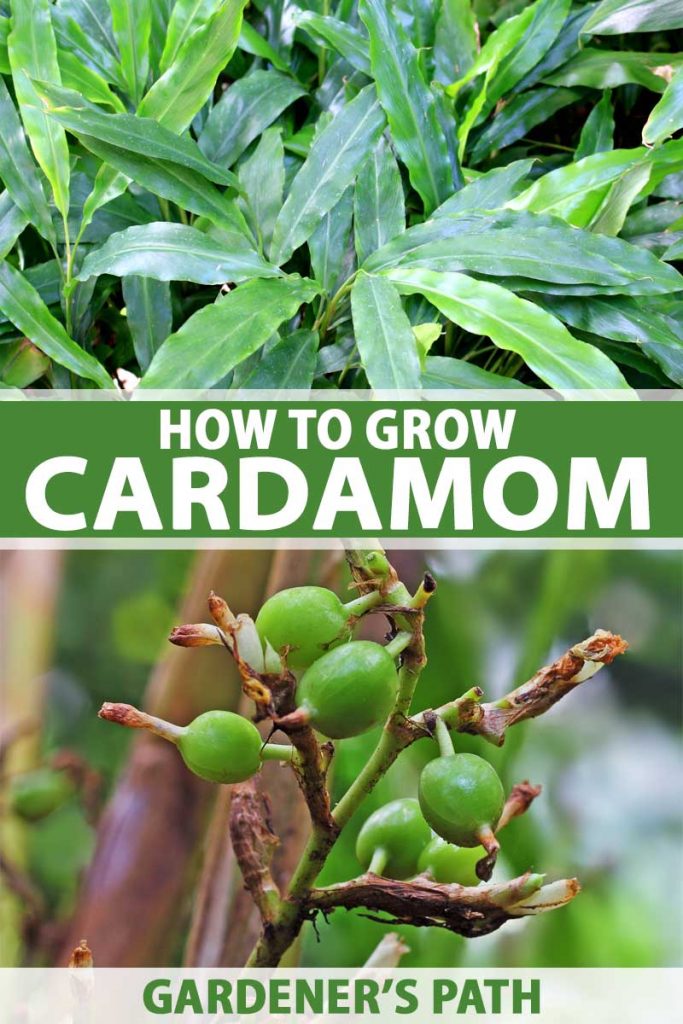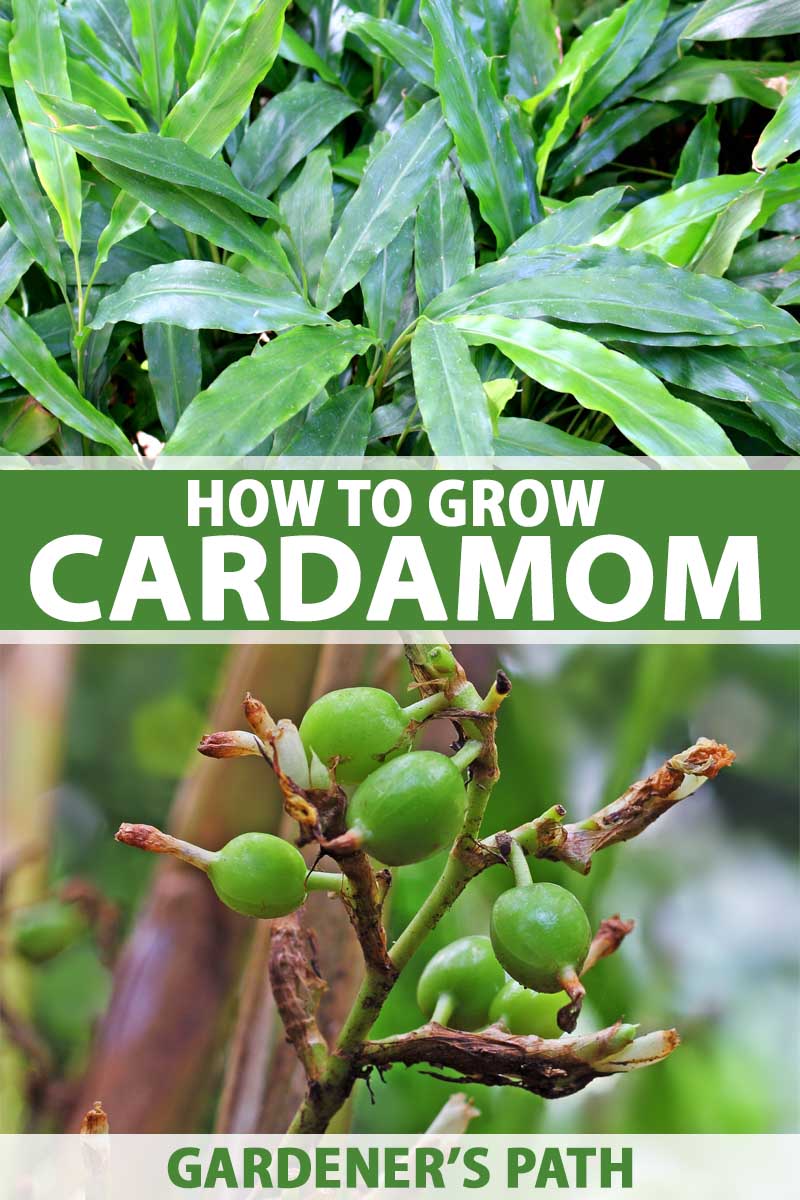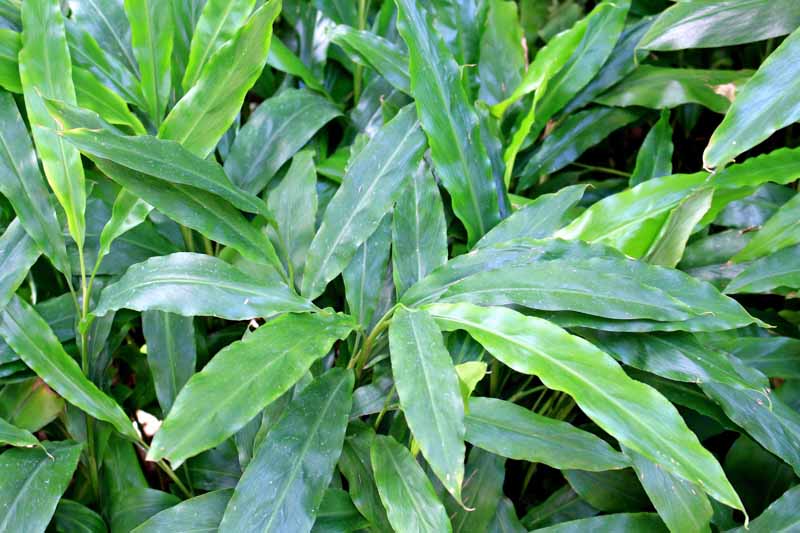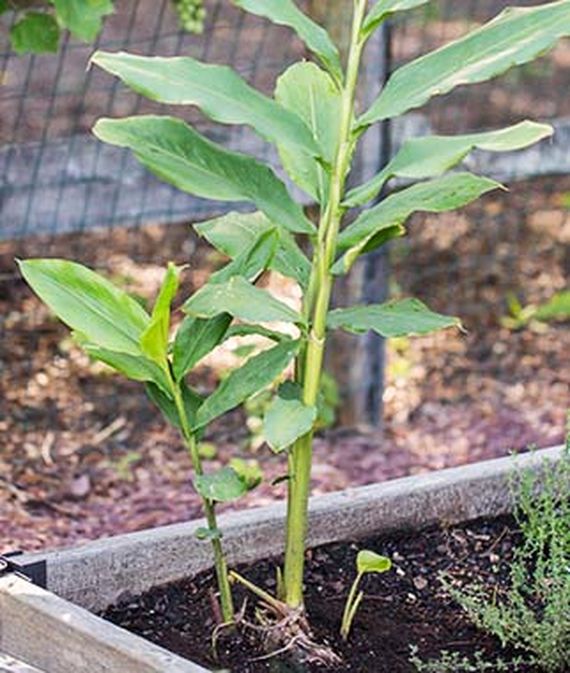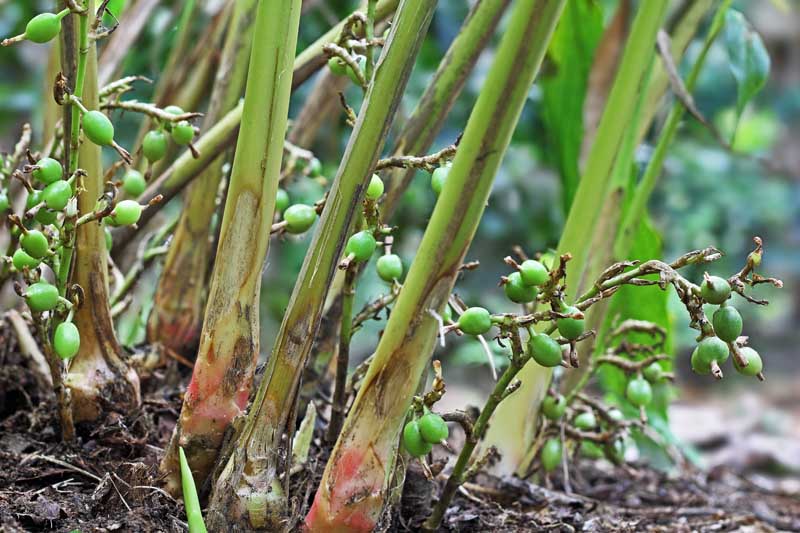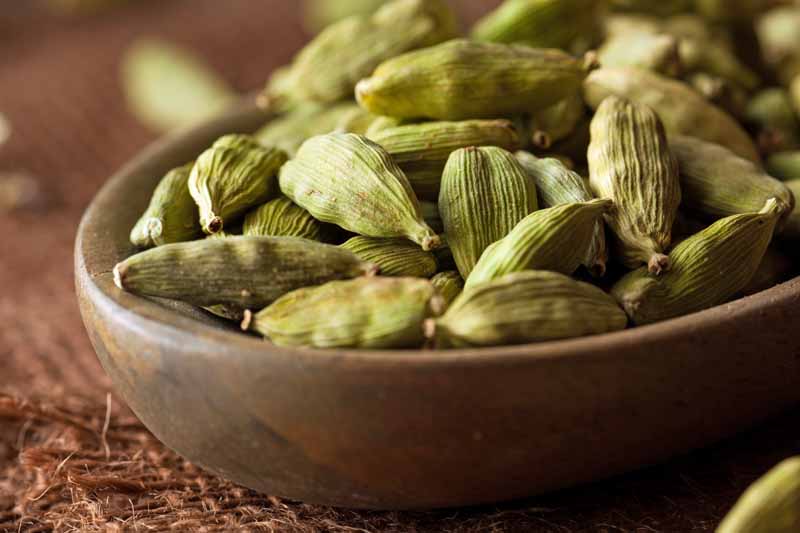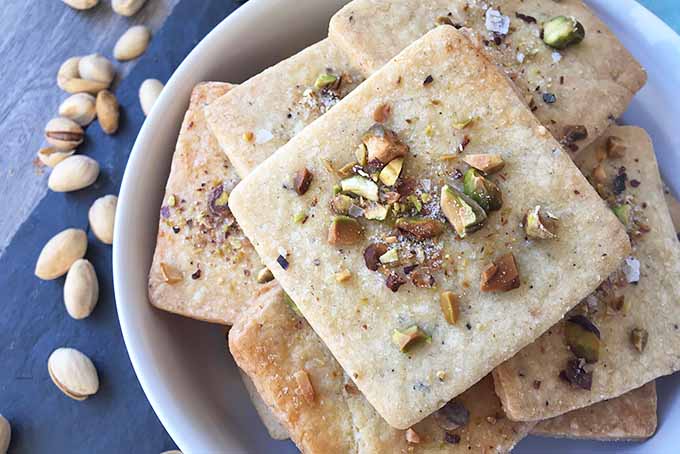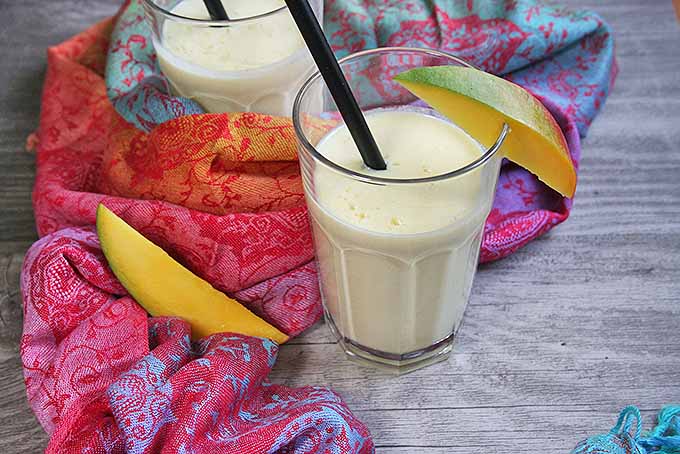We link to vendors to help you find relevant products. If you buy from one of our links, we may earn a commission.
What is Cardamom?
Cardamom is a spice made from the seeds of two different species in the genera Elettaria and Amomum in the family Zingiberaceae. The spice is made from the seeds which are found in small, thin pods. The pods have triangular cross section and a paper-like outer covering. Before we get too far, let’s chat about color. This article focuses on Elettaria cardamomum, commonly called green cardamom. You may have also heard of black cardamom, which comes from Amomum subulatum or Lanxangia tsaoko (formerly known as Amomum tsao-ko), and white cardamom, which usually refers to a bleached form of the green variety. Here we’ll concentrate on the green version, which is often included on lists of the most expensive spices because of its labor-intensive commercial harvesting process. E. cardamomum is a 5- to 10-foot-tall forest-dwelling plant that thrives in partial shade. As you might have guessed from our earlier allusion to its tropical nature, it can be grown as an outdoor perennial only in USDA Hardiness Zones 10 and 11. South Florida, Hawaii, and Puerto Rico, this one’s for you! The clumping plant, with rigid and erect stems featuring leaves that are up to 2 feet long, regrows each year from large underground rhizomes. Let’s learn more about growing this heady spice!
Cultivation and History
Native to the mountainous forests of southwest India, this spice became a staple ingredient in that country’s cuisine, with its use dating back at least 4,000 years. Ancient Greeks, Romans and Egyptians were fond of the spice.
During their roamings, Vikings discovered the spice and brought it back to Scandinavia, where it became a popular ingredient in mulled wine, pastries, and bread. Today, Saudi Arabia and Kuwait are the biggest importers of the spice. Guatemala is the largest commercial producer, followed by India and Sri Lanka. The unique taste of cardamom is often described as being very aromatic with resinous fragrance with some mint like flavor. Over at our sister site, Foodal, you’ll find a detailed guide describing the culinary and medical uses for cardamom. We’ll wait while you go read it…
Propagation
From Seed
Purchase seed specifically designed for planting, as opposed to just cracking open a couple pods from the pantry. Put the seeds in a glass jar and cover with 2.5 percent nitric acid solution. Stir for about two minutes, then pour the seeds and acid into a strainer. Rinse the seeds thoroughly. Place the seeds into a bowl and cover with lukewarm water; allow to sit overnight. If planting outdoors, plant your seeds ½ to 1 inch apart, about ⅛ inch deep in a partially shady place. They prefer rich humus soil that’s slightly acidic. Alternatively, you can plant cardamom seeds in a pot, so you can bring the plant indoors to overwinter. Cover with a mulch of straw or grass. Germination can take anywhere from 20 to 40 days.
Division
You can also divide cardamom rhizomes that are at least one year old with two growing stems to get more plants. Check out our perennial division guide here.
How to Grow
Make sure your plants are always partially shaded – don’t be taking a chainsaw to nearby trees. And most importantly, keep the ground moist. They do not like soil that dries out; water regularly if rain is not plentiful.
You might also give your plants a misting now and then, since they’re natively accustomed to high humidity. If you’ve planted cardamom in a container, bring it inside when temps drop below 50°F. Place the pot in a spot that gets 6 to 8 hours of bright but filtered light. Container-grown E. cardamomum plants can become root bound, which can discourage blooming. If you suspect this is the case, divide your plant. Expect flowers after about three years; the rhizomes may live for 10-15 years. From winter to midsummer, feed your plant fish emulsion every couple weeks.
Growing Tips
Water, water, water Not too much sun Not too chilly
Managing Pests and Disease
Insects
You may see thrips on your plants, which you can treat with traps.
Potted Cardamom Plant via Burpee If you’d like to purchase a plant, consider this one from Burpee. You’ll receive a plant that’s 3 to 8 inches tall in a 3-inch deep pot. You may also see evidence of detrimental nematodes, which manifests in poor growth and damaged-looking plants. If you suspect nematodes, dig up a plant and see if you can spot fairly severe root damage, which is caused by the tiny pests burrowing in, laying their eggs, and robbing the plant of nutrients. If you have a nematode infestation, you may have to destroy your plants and treat the soil by solarization or with a chemical nematicide to try to get rid of the pests.
Disease
These plants may be bothered by oomycetes or fungi; prevent spread by keeping the growing area clean and removing dead plant matter. You can also treat these problems with a fungicide.
Harvesting
At the base of the stalks, the plant forms long bracts of flowers that then develop into seed pods. These seed pods may be harvested by hand in the fall, 30-40 days after flowering.
Harvest timing can be tricky. You want to harvest the pods just before they are fully ripe and begin to split and release their seeds. If you are unsure, pluck a pod and check the color of the seeds inside. A ripe capsule has black seeds, whereas an immature capsule’s seeds are white. Another indicator is the fact that ripe pods will easily come away without much tugging. Start harvesting at the base of each stem and move up the stem, leaving for another day any pods that resist.
Preserving
Thoroughly wash the harvested pods, removing stems and extraneous matter. You’ll want to begin the drying process soon after harvesting to retain flavor. Dry the pods in a dehydrator at a temperature no higher than 120°F.
You can also dry the pods in the sun. If you choose this method, be aware the seed pods may bleach, losing their (commercially) desirable green coloring. The final product should have no more than 10% moisture content.
Quick Reference Growing Chart
A Flavorful Plant
Even if you aren’t a resident of the limited US regions in which cardamom will thrive in the ground, you can still enjoy this bountiful tropical plant with a little extra love and care. Topped with chopped pistachios and sea salt flakes, they are light, crispy, buttery treats! Get the recipe on our sister site, Foodal. For a refreshing drink, consider this Cool and Creamy Indian Lassi. Made with yogurt, sparkling water, or milk and your choice of mix-ins, this is a flavorful alternative to the usual soda or iced tea. Find the recipe at Foodal. This slightly sweet bread will impress friends and family. The elegant form may look daunting, but you’ll actually find it quite easy to make this Twisted Cinnamon and Cardamom Loaf. The recipe is at Foodal. Plant it in a container and bring it in to overwinter. Be sure to give it space, as it can grow to 10 feet tall! Imagine the joy of harvesting your own delicious spice. If you found this guide valuable, learn how to grow other culinary treats here:
How to Grow Sage Plant and Grow Ginger How to Grow and Harvest Turmeric How to Grow Bay Laurel
© Ask the Experts, LLC. ALL RIGHTS RESERVED. See our TOS for more details. Product photos via SAFLAX and Burpee. Uncredited photos: Shutterstock.
